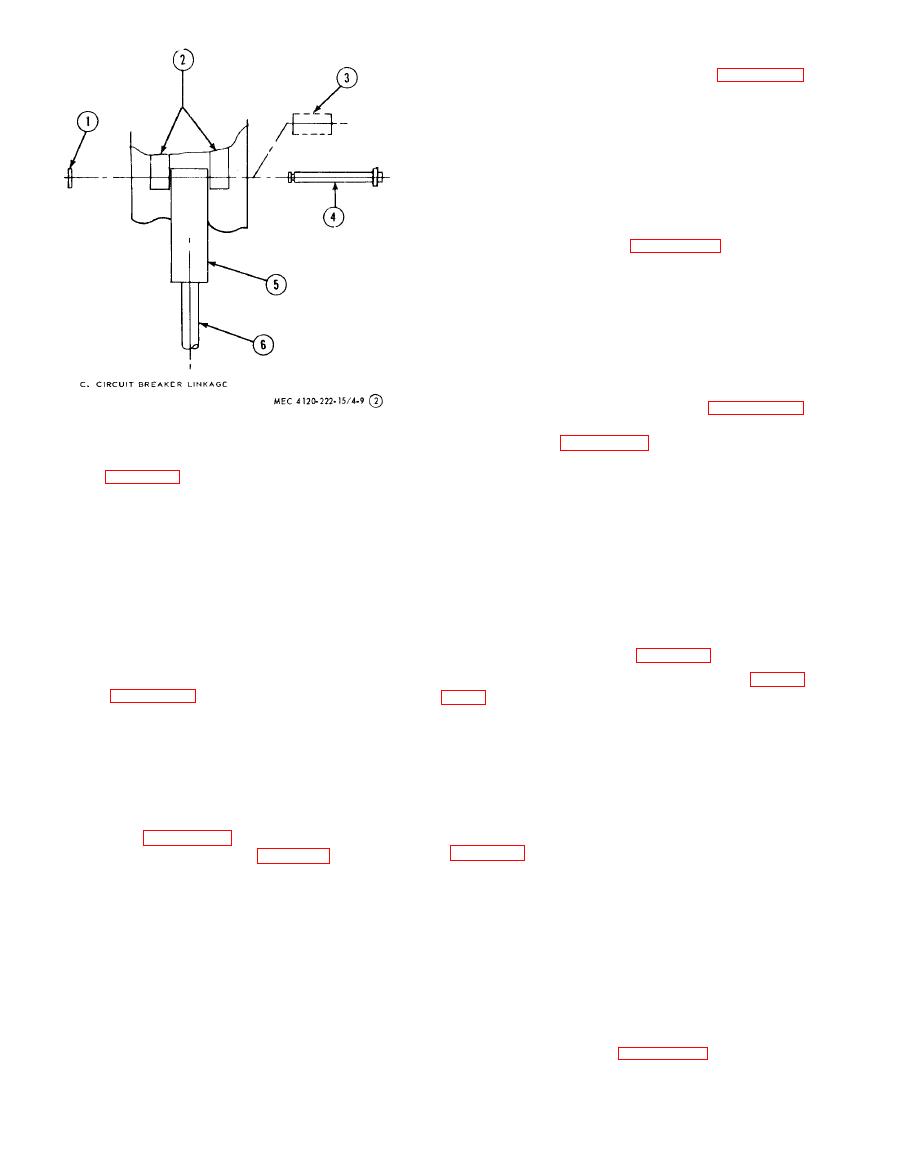 |
|||
|
|
|||
|
|
|||
| ||||||||||
|
|
 mode of operation, stop the unit and check the
electrical connection and coil. Refer to figure 5-16
and disconnect the electrical connector. Test the
solenoid valve coil for continuity with a multim-
eter set on OHMS. Continuity should exist be-
tween the coil leads. Connect one lead of the multi-
meter to the air conditioner casing and touch the
other lead to either of the coil leads. Continuity
should not exist.
c. Removal and Disassembly. Discharge the re-
frigerant system, refer to figure 5-15 and 5-16,
and remove and disassemble the hot gas bypass
solenoid valve.
Caution: The hot gas bypass solenoid valve
must be disassembled before disconnecting the
tubing from the valve to avoid heat distortion.
d. Reassembly and Installation. Replace any de-
fective parts, Reassemble and install in reverse
order of removal as illustrated on figures 5-16
and 516. Evacuate and recharge the unit refrig-
4 Pin
1 Snap ring
5 Linkage connector
2 Switch arms
erating system (para 533).
6 Linkage rod
3 Phenolic spacer
reassembling the valve to avoid heat distortion.
Line Bypass Solenoid Valve
a. General. S o m e o f t h e e a r l i e r m o d e l
CE20VAL6 and CE20VAL4 air conditioners do
a. On-Equipment Testing. Start the air condi-
not have a high pressure cutout switch. The high
tioner. If the solenoid valves fail to click upon
pressure cutout switch prevents the compressor
start of operation, stop the unit and check the
from operating if the head pressure exceeds 445
electrical connection and coils. Test the solenoid
psig (pounds per square inch gage).
valve coils in the same manner as the hot gas
bypass solenoid valve coil (para 5-23).
b. Removal. Discharge the refrigerant system
and remove high pressure cutout switch as illus-
rated in figure 5-15.
liquid line solenoid valve and liquid line bypass
c. Testing. Test the pressure switch for conti-
solenoid valve.
nuity with a multimeter set on OHMS. Press the
Caution: The solenoid valves must be disas-
reset button and recheck. Refer to the wiring dia-
sembled before disconnecting the tubing from the
gram for the points to establish continuity.
valve to avoid heat distortion.
d. Installation. Replace a defective high pres-
c. Reassembly and Installation. Pressure test,
sure cutout switch in reverse order of removal as
evacuate and recharge the refrigerant system
illustrated in figure 515. Evacuate and recharge
the unit refrigerant system (para 5-33).
reassembling the valves to avoid heat distortion.
525. Dehydrator
tuated by the temperature control and control the
flow of refrigerant through the system.
mulation of moisture and contaminants within the
b. On-Equipment Testing. Start the air condi-
refrigerant tubing. The dehydrator must be re-
tioner. In the bypass mode of operation the tubing
placed each time the system is exposed to the at-
from the discharge side of valve should become
mosphere.
warm immediately. If not, stop the unit and check
the electrical connection and solenoid valve coil. If
the valve fails to click upon start of the by-pass
the dehydrator.
AGO 20053A
|
|
Privacy Statement - Press Release - Copyright Information. - Contact Us |